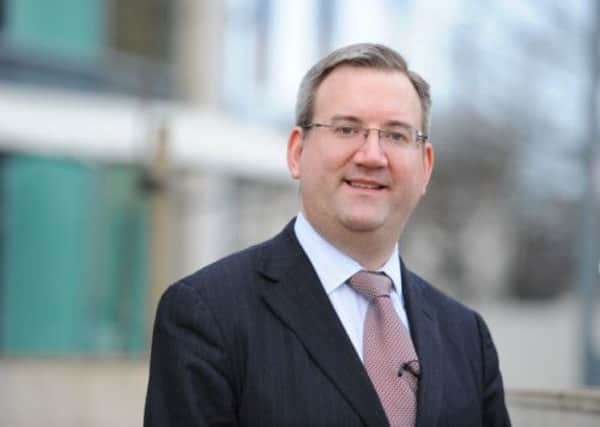Sector’s growth adds to hopes of recovery


Growth eased slightly last month following a two-year high in August as a result of weaker export orders, but employment and prices rose at their fastest pace in two years.
The figures will boost hopes that the UK economy is emerging from a five-year slump.
Advertisement
Hide AdAdvertisement
Hide AdThe CIPS/Markit manufacturing purchasing managers’ index (PMI) survey recorded a level of 56.7 in September, well above the 50 mark which separates growth from contraction.
While this was down on August’s recent peak of 57.1 and below City expectations for a 57.3 reading, economists said manufacturing has contributed to “strong” third-quarter growth.
Andy Tuscher, regional director (North) of EEF, the manufacturers’ organisation, said: “This is another solid month for manufacturing with output, orders and employment all up, paving the way for a decent quarter of growth across the sector.
“The good run of indicators should continue beyond the end of this year with some expansion in manufacturing taking place in Europe, Asia and the US.”
But he said there are reasons for caution.
Advertisement
Hide AdAdvertisement
Hide Ad“The challenge of the whole supply chain ramping up production to meet growing demand given the persist weakness in investment is one,” he said.
“A second concern is inevitably around any certainty that the positive outlook globally will be sustained.”
Exports grew at their weakest pace since May, with economists at consultancy Capital Economics raising fresh concerns about the balance and sustainability of the recovery.
However, they said: “The survey still points to a sector recovering at a rapid clip.
Advertisement
Hide AdAdvertisement
Hide Ad“A revival in the manufacturing sector that was particularly battered by the recession looks to be more and more entrenched.
“Notwithstanding some obstacles, with plenty of potential catch-up growth on offer, manufacturing looks set to make an important contribution to the overall economic recovery.”
Economists said factories are on course to contribute to overall growth of about one per cent in the third quarter, which would be an acceleration from 0.7 per cent in the second quarter.
The closely watched PMI statistics have repeatedly beaten economists’ forecasts in recent months, contributing to a sense that Britain’s recovery is gathering steam.
Manufacturing makes up 10 per cent of Britain’s economy.
Advertisement
Hide AdAdvertisement
Hide AdThe survey showed that factories are hiring people at their fastest rate since May 2011, with the employment sub-index rising to 54.0 from 51.9.
Tom Vosa, head of market economics at Yorkshire Bank, said: “The rise in the index suggests that manufacturers could well have boosted employment in the third quarter, although we cannot be sure until the workforce jobs survey data are released in December.
“Still, if manufacturers are increasing hiring then investment increases might not be far behind, helping the UK economy to rebalance.
“We still see the UK on track for strong growth this quarter as the recovery gains momentum.”
Advertisement
Hide AdAdvertisement
Hide AdRob Dobson, senior economist at survey compilers Markit, said: “These numbers are encouraging in respect to the rebalancing of the economy, with goods production likely to provide a major stimulus to economic growth in the third quarter.
“We would expect to see manufacturing output expanding by at least one per cent in the three months to September and possibly by as much as 1.5 per cent,” he added.
Manufacturing grew by 0.9 per cent in the three months to June, helping the economy as a whole to grow 0.7 per cent.
Many economists expect a faster pace of economic growth in the third quarter.
Advertisement
Hide AdAdvertisement
Hide AdThe outlook for factories is slightly less strong, with export orders growing at their slowest pace since May.
“With the exchange rate still around 20 per cent weaker than before the financial crisis, we would expect to be seeing far stronger export gains than companies are currently reporting, especially with the eurozone showing signs of finally pulling out of recession,” said Mr Dobson.
There was little sign of an improvement in productivity, which the Bank of England is counting on to hold off future interest rate rises.